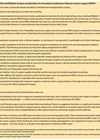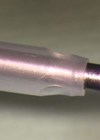This article covers recent clinical findings in mydriasis and anaesthesia for cataract surgery, shared by Sathish Srinivasan and Keith Davey at a surgical meeting in Manchester.
Towards dropless cataract surgery
Day case cataract surgery is the standard of care in the UK and optimal mydriasis and anaesthesia is essential for patient safety and intraoperative comfort. Adequate pupillary dilatation for cataract surgery is usually achieved by short acting mydriatics [1]. Mr Sathish Srinivasan, University Hospital Ayr and Clinical Associate Professor, University of Glasgow, reviewed anaesthesia for phacoemulsification cataract surgery and discussed issues and experience with topical and intracameral (IC) mydriatics.
Topical anaesthesia plus IC lidocaine as a local anaesthetic for cataract surgery maximises patient comfort [2,3]. As noted in the literature, injection of intraocular lidocaine increases patient cooperation and decreases the degree to which patients are bothered by tissue manipulation, two outcomes that justify its use [3]. A Cochrane systematic review, analysing eight trials comprising 1281 patients, concluded that the use of IC unpreserved 1% lidocaine is an effective and safe adjunct to topical anaesthesia for cataract surgery [4]. No significant difference was demonstrated in need for supplemental anaesthesia, intraoperative adverse events or corneal toxicity between the groups receiving topical anaesthesia alone and topical anaesthesia combined with IC lidocaine.
Using the standard topical regimen of mydriatics and anaesthetics for cataract surgery involves repeated instillation of drops prior to surgery to ensure adequate intraoperative mydriasis. This is time- consuming and can cause medication errors, ocular surface toxicity and even cardiovascular effects [5]. Intracameral administration of mydriatics is an alternative to the conventional topical regimen for cataract surgery. A ready-to-use combination of IC mydriatics and anaesthesia agent offers the possibility of increased patient comfort, especially during intraocular lens (IOL) implantation, and greater surgeon satisfaction with the anaesthesia used.
Mydrane (Thea Pharmaceuticals) is a preservative-free solution for IC injection that combines two synthetic mydriatic agents and one local anaesthetic agent. It is indicated for cataract surgery in adults to obtain mydriasis and intraocular anaesthesia during the surgical procedure and provides a newer method of mydriasis that avoids the need for preoperative mydriatic drops. One dose of 0.2ml solution contains 0.04mg of tropicamide, 0.62mg of phenylephrine hydrochloride and 2mg of lidocaine hydrochloride.
Tropicamide is a parasympatholytic agent, which acts by binding to and blocking the M4 muscarinic receptors of the eye muscles. It was included in the IC Mydrane formulation due to the reduced cardiovascular risk and faster recovery (six hours vs. 24 hours) compared with other parasympatholytic agents, including cyclopentolate. Although tropicamide as a monotherapy produces both mydriasis and cycloplegia, additional mydriasis occurs if sympathomimetic agents such as phenylephrine are used simultaneously. Phenylephrine is a direct acting sympathomimetic agent. It causes mydriasis via the stimulation of alpha-adrenergic receptors of the pupillary dilator (the resulting contraction of the pupillary dilator causes pupil dilation). Lidocaine is a local anaesthetic of the amide type that acts by inhibiting the ionic refluxes required for the initiation and conduction of impulses, thereby stabilising the neuronal membrane.
Clinical efficacy of IC mydriatic solution
A phase III, multicentre, randomised, open study evaluated the mydriatic and anaesthetic effects of IC Mydrane in comparison with a standard topical treatment regimen (phenylephrine and tropicamide) in 555 patients undergoing cataract surgery with a pupil diameter ≥7 mm following topical mydriatic application [5]. Capsulorhexis without additional mydriatics was successfully performed in 98.9% of patients in the Mydrane group and 94.7% of patients in the reference group receiving one drop each of tropicamide 0.5% and phenylephrine 10% repeated three times. Both groups achieved adequate mydriasis (>7 mm) during capsulorhexis, phacoemulsification and IOL insertion. Patients in the Mydrane group reported statistically greater comfort than the reference group before IOL insertion, experiencing statistically significantly less pain or sensation of pressure compared with the reference group (p=0.034). Table 1 presents summary mydriatic efficacy results.
Surgeon experience: rapid and sustained IC mydriasis
Mr Srinivasan discussed surgical experience and results of a single-centre study at University Hospital Ayr involving a prospective case series of 164 cataract patients assigned to IC administration of Mydrane at the beginning of cataract surgery, started in April 2016. Diabetics and patients on alpha blockers were excluded. At the beginning of surgery, 0.2ml of Mydrane was slowly injected in only one injection via IC route, through the side port or principal port. Pupil size was measured after Mydrane injection, after ophthalmic viscosurgical device (OVD) injection and at the end of the procedure.
Stratified cohort results by pupil size at different stages during cataract surgery show:
- Pupil size after Mydrane of at least 5mm achieved in 99% of patients, ≥5.5mm in 77% and ≥6mm in 70%
- Pupil size after Mydrane and viscoelastic injection was at least 6mm in all patients, ≥6.5mm in 89% and ≥7mm in 73%
- Pupil size at the end of surgery was at least 5mm in 99% of patients and ≥6mm in 81%.
“We obtained intracameral mydriasis within 30 seconds after Mydrane injection,” explained Mr Srinivasan. “After OVD injection, you get roughly 0.5 to 1mm of visco mydriasis irrespective of the viscoelastic used, with all patients in the study cohort achieving a pupil size of 6mm or more, which was sustained and maintained throughout the cataract procedure. In my hands, Mydrane is safe and effective, provides adequate anaesthesia, good intraoperative pupil dilatation, with sustained intraoperative mydriasis without the need for supplemental mydriatics or surgical manoeuvres.”
Evaluating the effectiveness of a new medicine: it’s more than the headline price
Mr Keith Davey, Huddersfield Royal Infirmary, Huddersfield, UK, discussed how to assess the cost of a new medicine, using Mydrane as an example. “If you wish to present a convincing business case proposal for local clinical settings, the budget impact model is a good approach to demonstrating the value and impact of new medications,” said Mr Davey.
Mydrane is available within the NHS and across most private healthcare providers. Published evidence demonstrates that IC Mydrane is an effective and safe alternative to standard eye drops for initiating and maintaining mydriasis and anaesthesia [5]. The unit cost of Mydrane is several times greater than that of the standard topical regimen of mydriatic eye drops. A budget impact model was developed from the perspective of a UK NHS hospital to estimate the economic impact of adopting Mydrane compared with a standard topical regimen (tropicamide 0.5% and phenylephrine 10%) for mydriasis and anaesthesia during cataract surgery.
The base model was developed to capture estimates of drug, consumables, staff and theatre costs for achieving mydriasis with Mydrane compared with a standard topical regimen. Modelling factors include acquisition cost, relative throughput efficiency (e.g. cost of any other associated requisites, reliability, time) and safety. The model base case used a hypothetical perspective comprising a typical UK NHS hospital carrying out 3000 cataract procedures annually in one theatre (e.g. around six per list for 50 weeks). Annual budget impact model acquisition costs were estimated at £18,000 and £3300 for Mydrane and a standard topical mydriatic regimen, respectively.
The model decision tree incorporated assumptions for resource use and evaluation of preoperative, intraoperative and postoperative factors. The main difference noted was a marked reduction in preoperative waiting time with IC Mydrane. Preoperatively, IC Mydrane avoids about 30 minutes of nurse time required for drop instillations to dilate patients, and also eliminates the need for top-up drugs, thereby reducing annual nursing time overall, freeing up 450 hours and saving £19,406 over the year.
Perioperatively, use of IC Mydrane to obtain mydriasis for cataract surgery takes 30 seconds to dilate in most cases (95% at >6.9mm in less than 30 seconds in a phase II clinical trial), adding about 35 hours to annual surgeon time overall (601 hours vs. 567 hours). IC Mydrane reduces the need for rescue mydriasis (e.g. iris hooks) and reduces unexpected delays with more predictable procedures, generating a reduction in annual surgical time of seven hours in total. Overall, the time saved equates to additional theatre capacity for an extra 37 procedures and the potential for additional tariff revenue.
The economic analysis predicts that IC Mydrane is cost-effective at just under £6.00 per patient. Despite a higher unit cost than mydriatic eye drops, the overall cost impact of using IC Mydrane is offset by reductions in staff costs and other factors, resulting in a lower direct cost that generates savings of £2.08 per patient per procedure. This equates to an annual cost reduction of £6240 for the base case NHS hospital in the budget impact model. For the NHS as a whole and assuming 396,000 procedures annually, the total estimated annual cost reduction exceeds £800,000.
Mr Davey commented in conclusion: “The concept of aggregation of marginal gains was pioneered by British cycling coach Sir David Brailsford and involves finding and exploiting small margins for improvement at every stage. In healthcare, incremental performance improvement and elimination of small, seemingly insignificant imperfections in patient and surgical pathways can provide cumulative benefit and contribute to significantly improved overall outcomes.”
References
1. The Royal College of Ophthalmologists. Cataract Surgery Guidelines. The Royal College of Ophthalmologists. September 2010.
2. Carino NS, Slomovic AR, Chung F, Marcovich AL. Topical tetracaine versus topical tetracaine plus intracameral lidocaine for cataract surgery. J Cataract Refract Surg 1998;24(12):1602-8.
3. Crandall AS, Zabriskie NA, Patel BC, et al. A comparison of patient comfort during cataract surgery with topical anesthesia versus topical anesthesia and intracameral lidocaine. Ophthalmology 1999;106(1):60-6.
4. Ezra DG, Allan BD. Topical anaesthesia alone versus topical anaesthesia with intracameral lidocaine for phacoemulsification. Cochrane Database Syst Rev 2007;(3):CD005276.
5. Labetoulle M, Findl O, Malecaze F, et al; Intracameral Mydrane Study 2 Group. Evaluation of the efficacy and safety of a standardised intracameral combination of mydriatics and anaesthetics for cataract surgery. Br J Ophthalmol 2016;100(7):976-85.
ACKNOWLEDGMENT
This article is based on presentations given at a 2017 surgical ophthalmology meeting in Manchester, UK, sponsored by Thea Pharmaceuticals. What is your experience?
Share your views with the editors by emailing diana@pinpoint-scotland.com
COMMENTS ARE WELCOME









